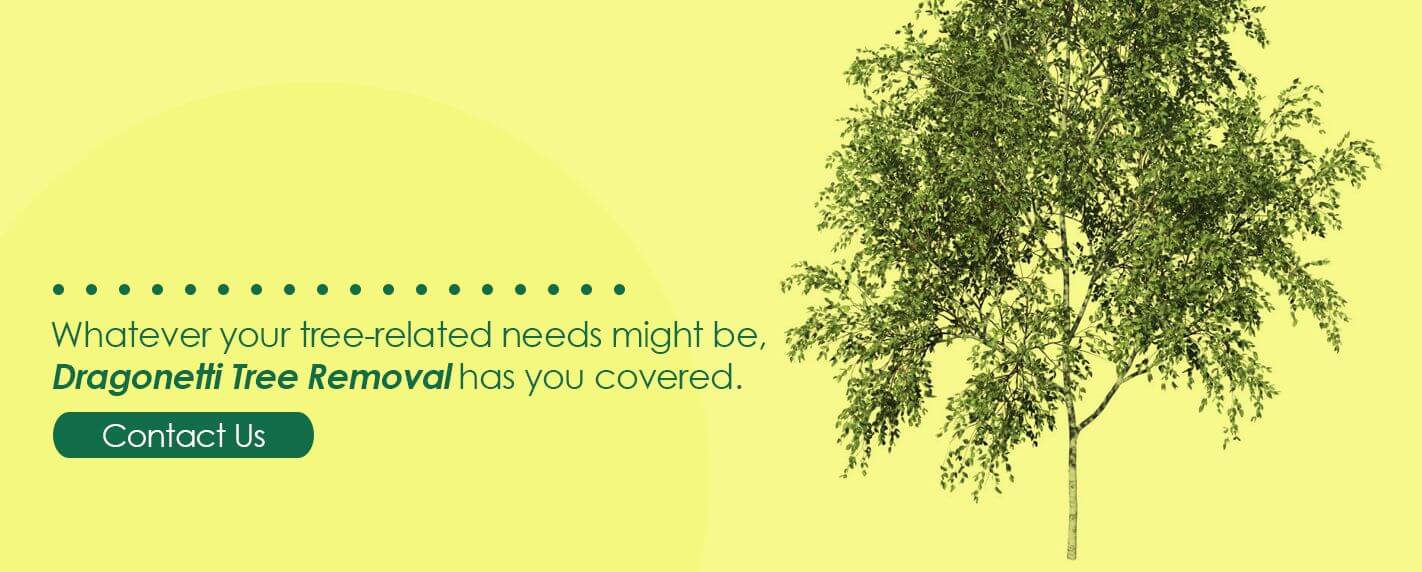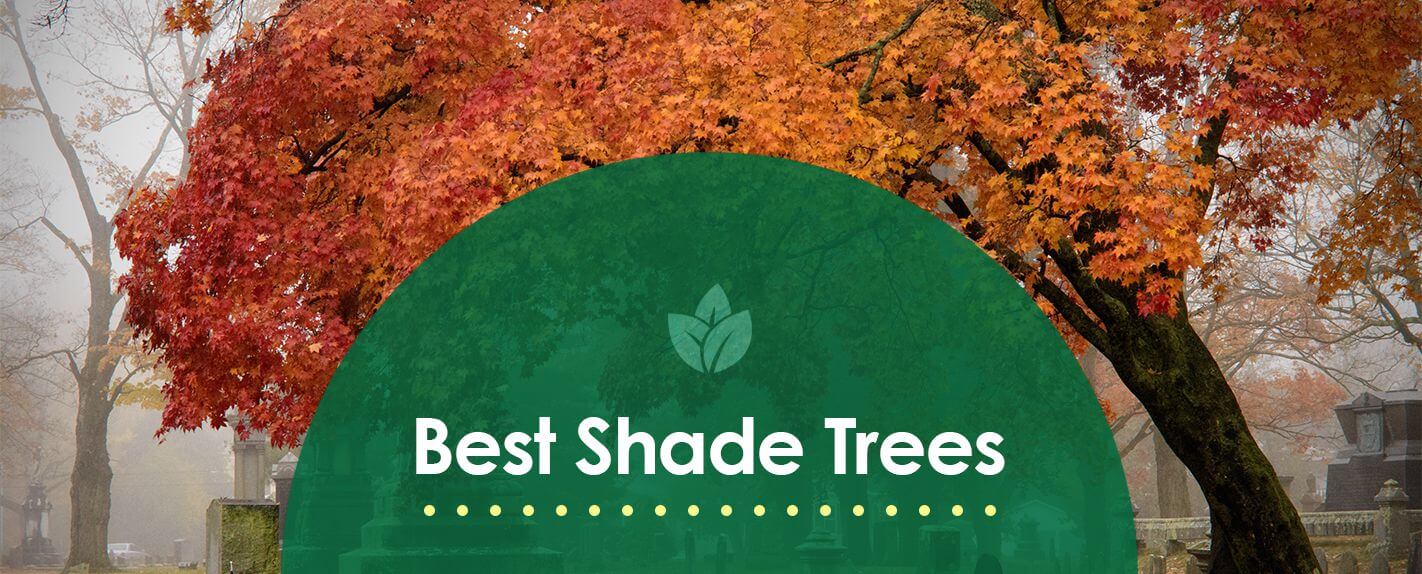
Shade trees are a nearly invaluable component of every piece of property. Without these huge spreading branches to lend shade over your house or yard, summers can grow unbearably hot, and it can be hard to spend time outside without constantly needing to squint into the light. Shade trees have even been known to help reduce electric bills by shading the house and easing the strain on the air conditioning. When faced with identical houses, one with a few tasteful shade trees and one without, it isn’t hard to see why most of us would choose the house with the shade trees every time.
Despite the many benefits of shade trees, there’s one major drawback that often stands in the way of us planting them, and that’s how long they take to grow. If you’re fortunate enough to move into a property that already has full-grown shade trees, you may not face this issue, but for anyone considering planting their trees, this can be a major difficulty. The trouble is that we want shade now, not thirty years in the future, and the thought of waiting for a small sapling to grow to full size can be extremely frustrating.
Today, we want to help you get the beautiful shade trees you’ve been hoping for by recommending the best shade trees for backyards. We also want to specifically direct your attention towards fast-growing shade trees. By carefully choosing the correct trees, you can easily diminish the number of years you’ll need to wait until you start experiencing the benefits of your growing shade trees.
THE BEST SHADE-GIVING TREES FOR YOUR YARD
In the market for a tree that will grow into a shade-giving giant? Try a few of these species.
1. Sugar Maple
The sugar maple is so popular that it’s been claimed as the state tree by not one or even two but four different states, and it isn’t hard to see why. This stately tree is known for its dense foliage and large spreading crown, both features that make it ideal as a shade tree. At its full height, these trees will grow anywhere from 60 – 75 feet tall, with a spread of 40 to 50 feet. In addition to its large size, you’ll also enjoy breathtaking fall colors from your sugar maple, as the leaves turn to stunning shades of orange, yellow and red when the temperatures begin to drop.
2. Quaking Aspen
The quaking aspen may not have the wide crown of the sugar maple or similar trees, but what it does bring is a unique look that’s all its own. While the leaves are green in the summer, they turn golden-yellow in the fall, providing a striking contrast to the stark white bark. At their mature height, these trees will typically reach heights of 40 to 50 feet, with corresponding spreads of about 25 feet. While this makes them less shading than many of the other trees you might be considering, they can still provide a great deal of shade when planted strategically, without entirely blocking the sun from your yard.
3. Paper Birch
The paper birch is another tree whose advantage comes from the fact that it provides ample shade while not drowning the entire yard in shadow. Additionally, it features a striking appearance that many of us often associate with the quaint romance of New England forests. When you choose the paper birch, you’ll enjoy white bark that naturally curves and peels, as well as leaves that turn bright yellow in the fall. Expect this tree to reach a mature height of up to 70 feet with a spread of up to 35 feet.
4. Bald Cypress
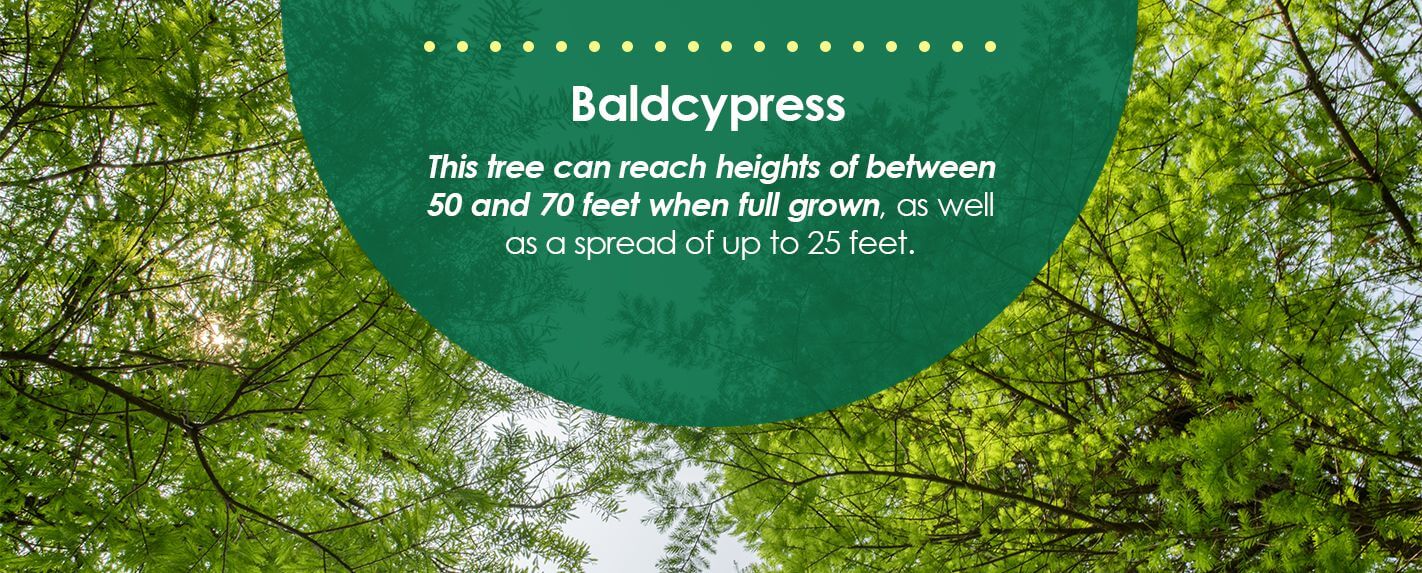
This tree’s appearance on our list may come as a surprise to some, as most of us picture it as the iconic tree of the southern American swamps. But the bald cypress can thrive in dry climates as well and while most of us associate it with the South, it’s been known to live a long and healthy life far into the northern states. This tree can reach heights of between 50 and 70 feet when fully grown, as well as a spread of up to 25 feet. It also provides gorgeous orange-and-red fall colors and has the unique property of being a deciduous conifer, meaning it has needles instead of leaves but loses them in the fall.
5. Red Maple
While every tree on this list puts on a show in the fall, the red maple is unique in that it stays red all year round, whether it’s covered in buds, flowers or foliage. This spectacular tree isn’t the tallest one out there, but it’s the perfect size for smaller yards or for locations where power lines are concerned. Its small size makes it adept at providing small pockets of shade around your yard without entirely blocking out the sun. With the red maple, expect a mature height of up to 60 feet and a spread of up to 40 feet.
6. Northern Red Oak
Tall, stately and all-American, the northern red oak is prized as a shade tree for its ability to hold up in both rural settings and urban centers. In addition to being beautiful all summer long, it also displays fire-red foliage in the autumn and can remain healthy even in less-than-ideal growing conditions. Expect this tree to grow up to 75 feet tall, with a spread of about 45 feet. Because this tree can grow so tall, you’ll want to make sure you have the space for it, but if you do, it’s one of the best trees for shade and will make a stunning addition to any yard.
7. Honey Locust
You’ll need a good amount of space in your yard to grow a honeylocust, but if you can manage it, there are few trees better at providing large amounts of shade. These towering specimens can grow as high as 70 feet at their full maturity and reach a spread of 50 feet. Their foliage also turns yellow in the fall, which can make a beautiful contrast if you have other trees that tend to be more red and orange during this time of year. Another benefit of this tree is that it features a more open silhouette, which allows enough light through the leaves that healthy grass can still grow beneath the leaves.
FAST-GROWING SHADE TREES
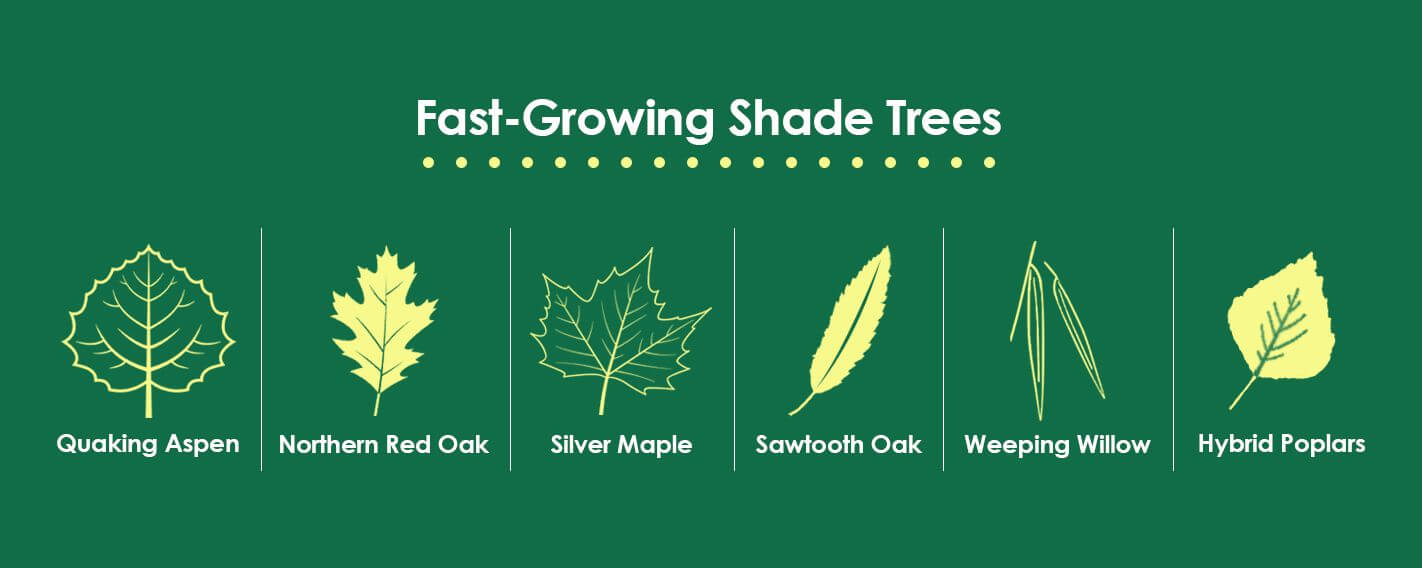
If you have all the time in the world, then your options for shade trees are virtually unlimited. Provided you’re willing to wait a few years, you can have your pick of tree species.
Not all of us are that patient, however. If you’re interested in shading your house and getting it done in as few years as possible, then you’ll want to narrow your search. For some of the fastest-growing trees that give shade, try a few of the species on this list.
1. Quaking Aspen
This extraordinary tree doesn’t just make our list of shade-giving trees — it also has a well-earned spot on our fast-growing shade tree list. These trees grow unusually quickly and are also exceptionally long-lived. This means that when you choose to plant an aspen, it will soon grow to provide the shade you need and remain in place for decades and even centuries to come.
2. Northern Red Oak
Another tree that makes an appearance on this list as well as our general list, northern red oaks are fast growers that will quickly transform from a sapling into a towering giant in your yard. These trees get large, so you’ll want to make sure you have the space to accommodate a fully-grown specimen. They’re also highly adaptable, however, meaning that whether you live on a farm or a busy suburban street, these trees should be able to thrive and grow with no trouble.
3. Silver Maple
The name of this tree isn’t an exaggeration. While these leaves are green, the undersides have a striking silvery sheen that’s often visible in the breeze, giving the entire tree a distinct look. Appearances aren’t the only benefit of this tree, however. Silver maples also grow very quickly, reaching up to 80 feet tall and developing wide-spreading root systems. You’ll need a decent amount of space to accommodate one of these trees, but if you have it, it will easily give you shade in a short amount of time.
4. Sawtooth Oak
Most oaks are fast growers and great shade trees, but there’s something about the sawtooth oak that makes it extra special. Enjoy this tree’s unique oblong leaves and yellow foliage in both the spring and the fall for a dazzling spectacle that helps bring balance and interest to your yard. Because this tree is known for having a wide spread — up to 60 feet — you can also be sure that it will provide plenty of shade, although you’ll need to make sure you have the space for it.
5. Weeping Willow
While most of us picture weeping willows next to ponds and streams, the truth is that they can grow well when planted next to water or in dryer soil. These trees grow to enormous sizes — up to 40 feet tall, spreading their dropping branches up to 35 feet — and they’re also speedy growers, taking root quickly and soon providing all the shade you’ll need. Be aware that they’re notorious for dropping leaves and twigs, however, so if you’re looking for a clean, no-mess tree, this may not be it.
6. Hybrid Poplars
If you’re looking for fast growth, look no further than the hybrid poplars. These tall, narrow trees are incredible growers, and it’s not uncommon to hear of them growing as much as 10 feet over a single year. While they don’t offer much in terms of spread, meaning their shade will be more limited than broader trees, the speed at which they grow is unparalleled. This makes them ideal for planting in a row, allowing shade through volume rather than through the work of a single tree.
TIPS FOR GROWING SHADE TREES
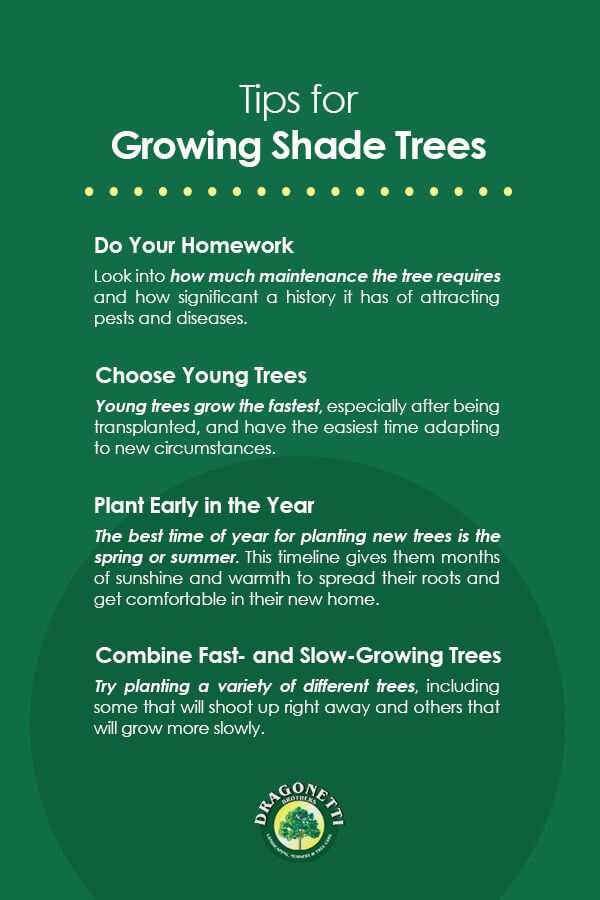
Some trees grow quickly, and others take their time. Every tree grows at its speed, and as gardeners and landscapers, there isn’t always much we can do to alter this natural speed. However, we can do our best to give these trees the tools they need to grow to the best of their abilities and work to remove any obstacles that might impede them from doing so.
If you’re looking to grow shade trees as quickly as possible, here are a few tips to follow along the way.
1. Do Your Homework
While your initial goal may be to choose the fastest-growing tree you can find, no matter what it is, it’s important to look at every aspect of the trees you’re considering, not just the growing speed. In particular, look into how much maintenance the tree requires and how significant a history it has of attracting pests and diseases. If most sources agree a specific tree is very likely to become infested with pests, realize that this could slow or even end the tree’s growth before it ever becomes large enough to provide shade.
In cases like this, it may be wiser to choose a tree that grows a bit slower rather than one that grows quickly but is extremely fragile and susceptible to problems.
2. Choose Young Trees
It may seem counterintuitive to choose young trees over ones that are already half-grown. After all, the older a tree is, the closer it is to its full size already. But the truth is that young trees grow the fastest, especially after being transplanted, and have the easiest time adapting to new circumstances. While the tree will initially be small, you’ll have a higher success rate at the end of the day than if you choose an older tree. On top of this, they’re also cheaper and easier to plant on your own without needing to hire additional help.
3. Plant Early in the Year
The best time of year for planting new trees is the spring or summer. This timeline gives them months of sunshine and warmth to spread their roots and get comfortable in their new home. While you can often get away with planting as late as mid-August, it’s unwise to plant any later than this. Trees planted so late in the year will not have the time they need to establish a full root system before the ground freezes. If this happens, the tree will likely die, and you’ll need to start from scratch again next year.
4. Combine Fast- and Slow-Growing Trees
While the benefits of fast-growing trees are undeniable, it’s the slow-growing trees that often grow to be the largest, live the longest and remain the strongest throughout storms and wind. For the best and most varied landscape, try planting a variety of different trees, including some that will shoot up right away and others that will grow more slowly. This variety allows you to experience the benefit of fast shade while also giving you long-lasting trees, as these slow-growers will eventually push out the faster trees for long-lasting shade over time.
When you require tree removal experts, call Dragonetti Tree Removal. We provide various tree services to meet your needs.

